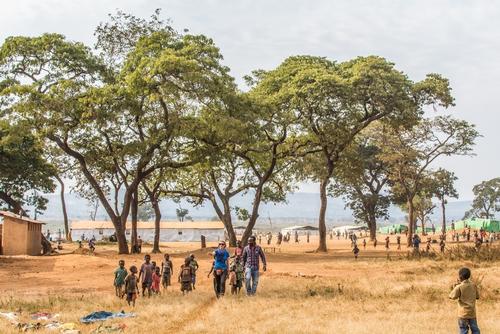Rachel Marsden just returned from Nyarugusu refugee camp in Tanzania where she was the emergency coordinator for Médecins Sans Frontières (MSF). MSF began activities in the camp in mid-May in response to a mass influx of thousands of refugees from Burundi, fleeing political unrest. The camp, in existence for 19 years and originally home to 64,000 Congolese refugees, is now stretched beyond its capacity. Since the latest influx from Burundi, the camp’s population has swelled to over 122,000 and is growing every day.
“In the last two weeks, the number of people streaming across the border from Burundi has almost tripled. Previously, there were around 2000 people arriving each week, but as elections in Burundi approach and the unrest continues, that number has risen sharply to 7000 per week. We can only expect that number to increase.
Overcrowded shelters, not enough tents
Nyarugusu camp’s population has essentially doubled in the space of two months. Before, the services were sufficient for the population, but now, they are stretched beyond their limits. Shelters are not being provided quickly enough to keep up with the number of refugees who continue to arrive.
New arrivals are gathering in transit areas in the camp and are placed in large shelters, each home to between 200 and 400 people, while they wait to be given a tent for their family. The speed at which the refugees are arriving is increasing, space is running out, and some people have been living in these conditions for five or six weeks now. They are living on top of each other: there are some shelters which are so overcrowded that people only have half a square metre to live. The risk of communicable diseases in these conditions is high.
Insufficient water and latrines
There is not enough water for the number of people now living in the camp. Before the latest influx, people received around 23 litres each per day, well within accepted standards. It is reported that the average now is only 11 litres. However, that is not consistent throughout the camp, and there are some areas where people only receive four or five litres, not nearly enough for drinking, cooking and washing.
There are also not enough latrines, more need to be built and the overall sanitary conditions improved in order to reduce the risk of diseases and their spread.
In terms of the general health situation, it is not catastrophic when the refugees arrive. Their journey to the camp usually lasts only two or three days. Although they are not in a terrible state, they arrive to a place where the conditions are extremely precarious. They do not have enough access to clean water and sanitation conditions are poor. In these conditions, they are at increased risk of communicable illnesses such as respiratory infections and diarrhoeal diseases.
MSF responds: cholera, malnutrition and water provision
We began our activities when the first influx of refugees arrived from Burundi in mid- May, amidst reports of a large cholera outbreak. MSF responded quickly and constructed cholera treatment centres in both the Nyarugusu refugee camp and in Kagunga, a transit area five hours away. In Nyarugusu, we also carried out a preventive oral cholera vaccination campaign, vaccinating 107,000 Congolese and Burundian refugees. The cholera situation is currently under control, and thankfully, we are seeing very few patients in our treatment centres.
At the same time as the vaccination, we carried out screening for malnutrition in children under five. Out of more than 16,600 children screened, around 800 were moderately malnourished. While this is not at emergency levels, if these children are not appropriately cared for now, their condition could become more severe in a matter of three or four weeks.
As more refugees are expected to arrive in the coming weeks, MSF is now stepping up its services to support the provision of healthcare and sanitation services in the camp. Our teams have started providing water and building more latrines. We have commenced mobile clinics at one of the entry points to the camp. We will be providing intensive therapeutic feeding care for severely malnourished children in the main hospital in the camp, as well as delivering training for the staff. This will be complemented by setting up outpatient nutrition clinics throughout the camp.
During the six weeks I was in the Nyarugusu camp, I saw a stable situation change to an uncertain one. Now, as organisations are stretched beyond their limits as they try to cope with the increase of people arriving on a daily basis, this vulnerable population is more at risk. Reduced access to water, sanitation, shelter and healthcare puts them at a high risk of communicable and preventable diseases. Action needs to happen now, before the situation deteriorates even further.”



